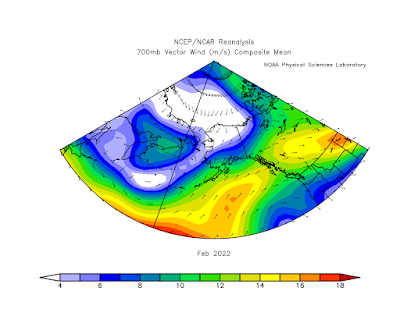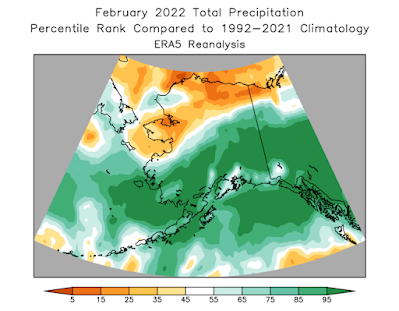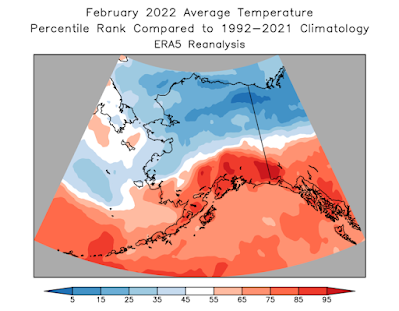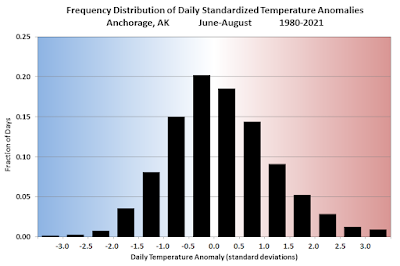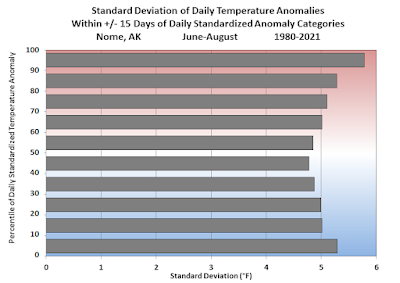For the third year in a row, the North Slope of Alaska has seen a relatively cold winter, i.e colder than in many recent years. With a week left to go, the November-March period has been the coldest since 2012-2013 in both Utqiaġvik and Umiat. The deep winter period of December-February was colder two years ago, but that was mostly because of a very cold February 2020. Interestingly, February has been easily the coldest month of each of the past 3 winters on the North Slope.
This winter the cold was somewhat persistent from mid-November on, and each month from November through February was colder than the 1991-2020 normal (and the 1981-2010 normal) for the North Slope climate division. This is also true for the Northeast Interior climate division, but nowhere else in Alaska. However, with significant warmth in early March, it looks a bit unlikely that this month will be the fifth consecutive below-normal month.
In Umiat the number of days (72) reaching -30°F or lower was the highest since 2011-2012, but it only reached -50°F three times (compared to 11 times in Jan-Feb 2020). Utqiaġvik did not manage to reach -40° after succeeding in the last two winters.
I found myself curious about the correlation between winter temperatures on the North Slope and temperatures elsewhere in Alaska and farther afield, so here's a map. I've used detrended November-March average temperatures from ERA5, and the map shows the correlation with a grid cell near Umiat.
The interesting aspect of this to me is how the Brooks Range forms such an effective boundary in the temperature anomalies: the correlation between North Slope and interior Alaska winter temperatures is really modest - mostly less than +0.6 (i.e. less than about a third of the variance is joint). According to ERA5, Umiat winter temperatures are better correlated with temperatures over the central Bering Sea than in Fairbanks or even Fort Yukon.
(Note that I checked the ERA5 data against actual observations from Umiat since 2007, and the performance is surprisingly good: correlation of +0.99.)
Here's the same correlation map but for Fairbanks winter temperatures: this shows a much more expansive area of high correlation, including across the Alaska Range (much higher elevation than the Brooks Range).
To visualize the flow patterns that have the greatest linear relation to winter temperatures in Umiat, the map below shows the correlation with 500mb height. A ridge anomaly right over Alaska is favorable for North Slope warmth in winter, but a trough tends to brings cold. This contrasts with the more expansive (PNA) correlation pattern for Fairbanks - second map below.
For completeness, below are the MSLP correlations. Interestingly, low pressure over the eastern Bering Sea is closely connected to winter warmth in Fairbanks, but it has the opposite correlation (albeit slight) with Umiat temperatures.














